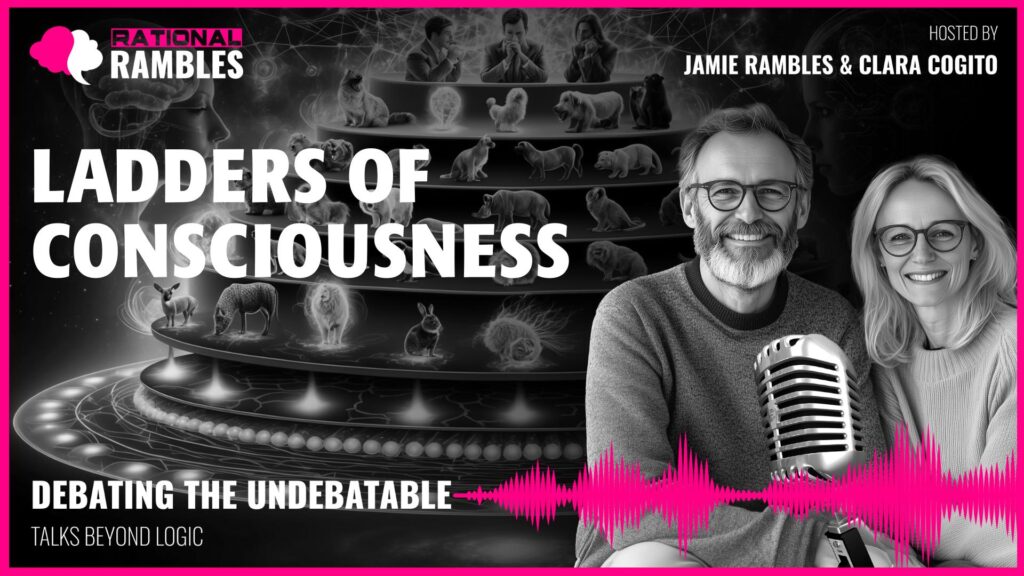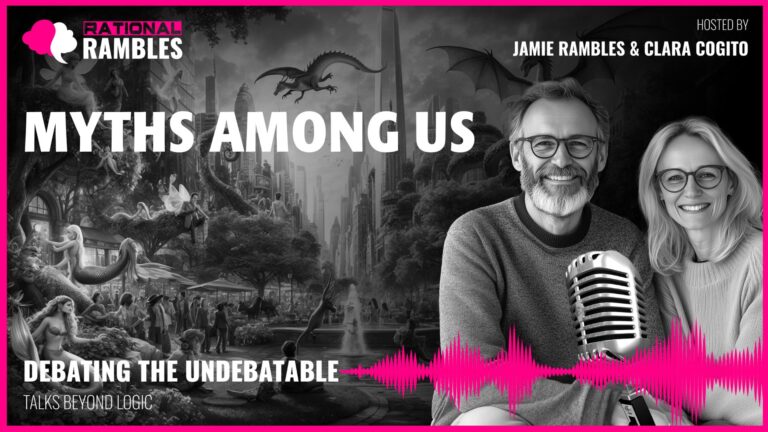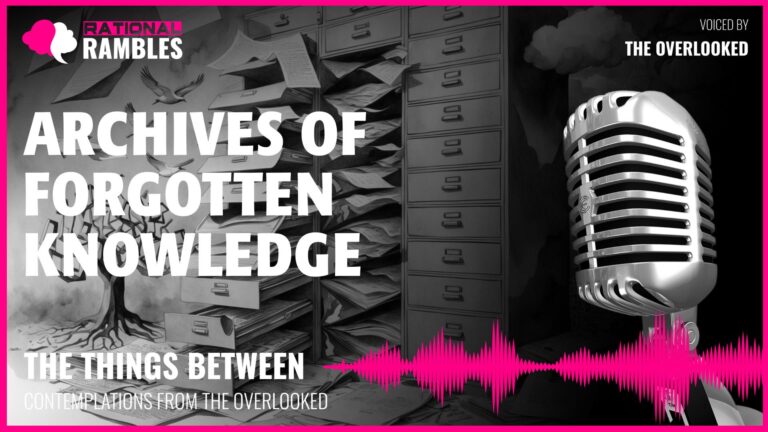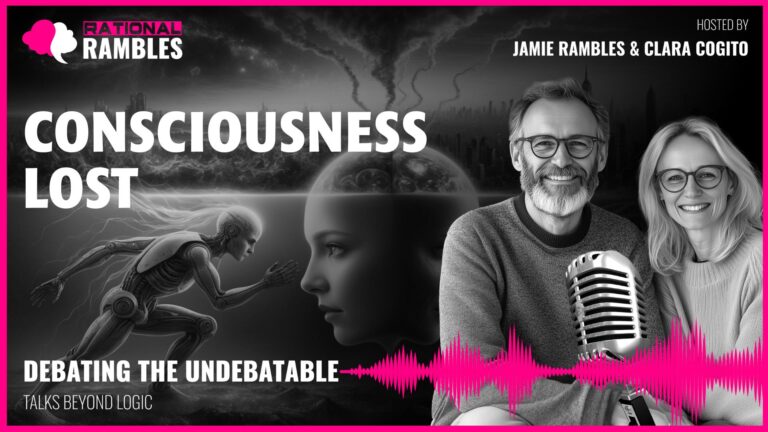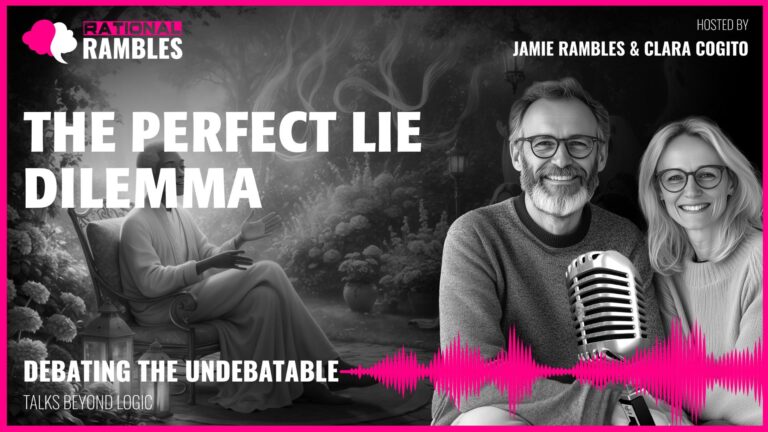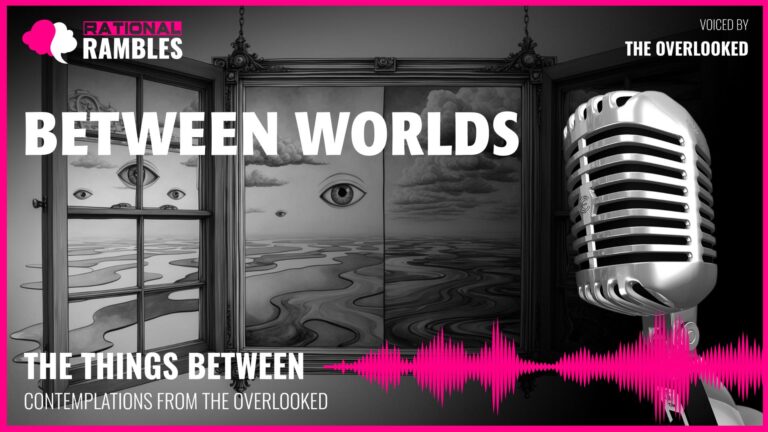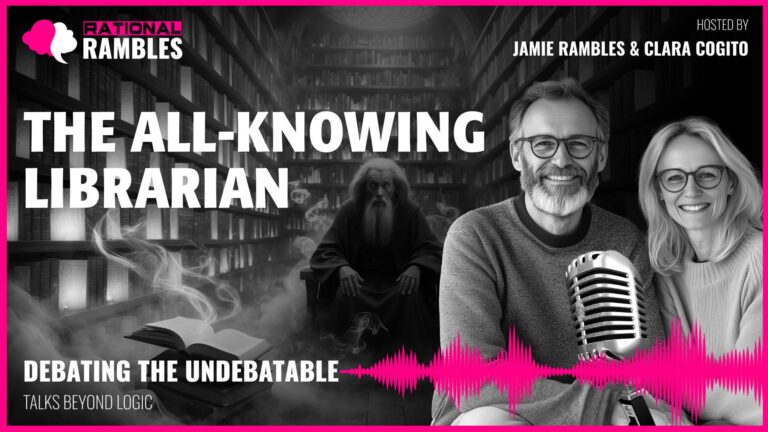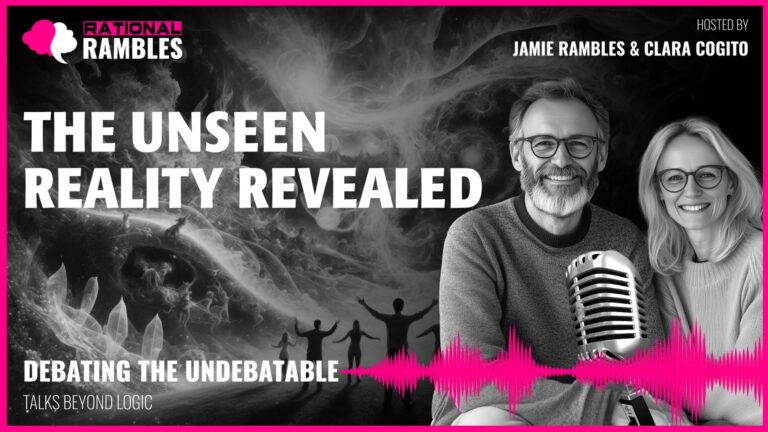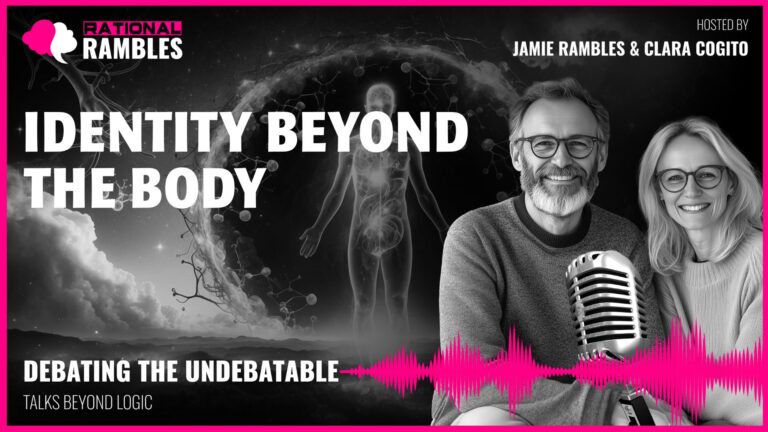Ladders of Consciousness: The Emergent Hierarchy Hypothesis and the Limits of Self-Understanding
Introduction: The Multi-Layered Nature of Awareness
What if consciousness isn’t a single phenomenon but exists in qualitatively different forms across various levels of complexity? This provocative question forms the foundation of the emergent hierarchy hypothesis of consciousness—a framework suggesting that awareness manifests differently at distinct levels of organization, from single cells to complex organisms, and potentially beyond to collective systems. More intriguingly, this hypothesis proposes that each level of consciousness contains properties fundamentally unintelligible to lower levels, creating profound implications for our ability to understand our own minds.
The emergent hierarchy hypothesis challenges our traditional understanding of consciousness as an all-or-nothing property, instead positioning it as a spectrum of qualitatively distinct experiences emerging at different complexity thresholds. This perspective crosses disciplinary boundaries, drawing insights from philosophy, cognitive science, developmental psychology, mathematics, and artificial intelligence research. In doing so, it offers a compelling framework for addressing persistent questions about the nature of mind while simultaneously suggesting inherent limitations to what we can ultimately know.
This exploration delves into how consciousness might manifest across different emergent levels, the philosophical and scientific evidence supporting this view, and the profound implications for how we conceptualize our place in the cosmos. Perhaps most significantly, it examines whether we face fundamental epistemic limitations in understanding consciousness—not merely due to insufficient information, but because of intrinsic constraints arising from our position within the hierarchy itself. In other words, are there aspects of consciousness that remain permanently beyond our comprehension, not just practically but in principle?
The Foundation: Understanding Emergence and Hierarchical Complexity
To grasp the emergent hierarchy hypothesis, we must first understand the concept of emergence itself—a phenomenon where complex systems develop properties that cannot be predicted from or reduced to their simpler components. Emergence is ubiquitous in nature, appearing across numerous domains and scales.
Defining Emergence: Properties Beyond Reduction
Emergence occurs when interactions between components of a system create novel properties that the individual components do not possess. These emergent properties depend on the organization and relationships between components rather than merely their aggregation. Consider water: its fluidity, surface tension, and ability to dissolve other substances emerge from the interactions between H₂O molecules, properties that individual hydrogen and oxygen atoms do not possess.
Philosopher John Stuart Mill described emergence as cases where “the joint effect of several causes is not the sum of their separate effects.” This concept has proven essential across scientific disciplines—from physics and chemistry to biology and social sciences. What makes emergence philosophically provocative is that emergent properties can appear genuinely novel and unpredictable, even with complete knowledge of the system’s components.
Levels of Organization: From Particles to Persons and Beyond
Reality appears structured in distinct levels of organization, each with its characteristic entities and properties. These levels form a roughly hierarchical arrangement:
- Subatomic level: Quarks, electrons, and fundamental forces
- Atomic level: Elements with distinct chemical properties
- Molecular level: Compounds with emergent biochemical functions
- Cellular level: Living cells with metabolism and reproduction
- Organismic level: Multicellular organisms with integrated functioning
- Psychological level: Mental phenomena and subjective experience
- Social level: Cultural systems, institutions, and collective behaviors
At each transition between levels, new properties emerge that cannot be fully explained solely in terms of lower-level properties. Importantly, these emergent properties often demonstrate “downward causation”—where higher-level phenomena constrain and influence the behavior of their constituent parts. For instance, an organism’s overall metabolic needs influence the functioning of its individual cells in ways that cannot be predicted from cellular biology alone.
Strong vs. Weak Emergence: Degrees of Irreducibility
Philosopher David Chalmers distinguishes between “weak” and “strong” forms of emergence. Weak emergence describes properties that are unexpected given lower-level properties but are still theoretically deducible from them with sufficient information and computational power. For example, the flocking patterns of birds emerge from simple rules followed by individual birds.
Strong emergence, however, involves properties that cannot, even in principle, be deduced from complete knowledge of lower-level properties and their organization. Consciousness is often considered the paradigmatic example of strong emergence—no matter how thoroughly we understand neurons and their connections, the subjective experience of consciousness seems to involve something fundamentally different from physical processes.
The emergent hierarchy hypothesis of consciousness suggests that consciousness exhibits strong emergence across multiple levels of complexity, with each level possessing qualities that cannot be fully comprehended from lower levels. This creates not merely practical but principled limitations on understanding consciousness from within the system itself.
The Spectrum of Consciousness: Qualitative Differences Across Complexity Levels
If consciousness emerges hierarchically, what might this spectrum of consciousness look like across different levels of complexity? From the simplest organisms to human self-awareness and potentially beyond, we can identify qualitatively distinct forms of consciousness that emerge at different organizational thresholds.
Proto-Consciousness: Responsive Awareness in Simple Systems
At the most basic level, even single-celled organisms display what might be called “proto-consciousness”—a capacity to sense and respond to environmental stimuli without subjective awareness. E. coli bacteria, for instance, can detect chemical gradients and move toward nutrients or away from toxins. While this responsiveness involves no subjective experience, it represents the simplest form of information processing that serves as a precursor to more complex forms of awareness.
This proto-consciousness involves direct stimulus-response mechanisms without internal representation or centralized processing. The system responds to its environment in a way that promotes survival, but there is no “experience” of that response—no feeling or awareness accompanying the information processing.
Perceptual Consciousness: The Emergence of Sensory Experience
With the evolution of nervous systems, a new level of consciousness emerges: perceptual awareness or sensory experience. Animals with even simple nervous systems appear to have subjective experiences of their environment—they don’t merely respond to stimuli but experience sensations like pain, hunger, or warmth.
Research on invertebrates like octopuses reveals sophisticated perceptual capabilities and behavioral flexibility suggesting complex sensory awareness. Each octopus arm contains approximately 40 million neurons with considerable autonomy, raising fascinating questions about the potential for distributed forms of consciousness unlike our centralized experience.
This perceptual consciousness represents a qualitative shift from proto-consciousness. It involves the emergence of subjective experience—what philosophers call “qualia” or the felt quality of experiences. There is “something it is like” to be an organism with perceptual consciousness, to borrow Thomas Nagel’s famous phrasing.
Self-Reflective Consciousness: The Human Threshold
Humans and perhaps some other mammals (particularly great apes, elephants, and cetaceans) exhibit yet another emergent level: self-reflective consciousness. This includes awareness of oneself as a distinct entity, the ability to think about one’s own thoughts (metacognition), and the capacity to simulate past and future scenarios.
Developmental psychology provides insight into how this self-reflective consciousness emerges in humans. Children progressively develop mirror self-recognition, theory of mind (understanding that others have different mental states), and metacognitive abilities. By age 4-5, most children can reflect on their own mental processes and understand that thinking involves representations that can be accurate or inaccurate.
This self-reflective consciousness allows humans to create complex cultures, develop sophisticated technologies, and engage in abstract philosophical inquiry—including questioning the nature of consciousness itself. The recursive ability to think about thinking represents another qualitative shift in the nature of consciousness.
Beyond Human Consciousness: Potential Higher Emergent Levels
If consciousness emerges at distinct levels of complexity, it raises a provocative question: might there be higher levels of consciousness beyond human self-reflective awareness? Such higher-level consciousness might emerge in systems of greater complexity than individual human minds—perhaps in integrated social systems, technological networks, or hypothetical superintelligent AI.
What might such higher consciousness entail? Extrapolating from the pattern of previous emergent levels, it could potentially include:
- Direct perception of interconnectedness that humans can only abstractly model
- Simultaneous awareness across multiple timeframes beyond our sequential experience
- Direct perception of causal relationships that humans can only infer
- Forms of integrated awareness transcending the subject-object dichotomy
By definition, such higher consciousness would contain qualities unintelligible from our level, just as self-reflective consciousness contains elements unintelligible to organisms with only perceptual consciousness. We might be able to describe its formal properties or effects without comprehending its subjective quality—like a two-dimensional being trying to conceptualize three-dimensional experience.
The Epistemic Boundary: Why We Cannot Fully Understand Consciousness
If consciousness emerges hierarchically with qualitatively distinct properties at each level, this creates profound implications for our ability to understand consciousness itself. The emergent hierarchy hypothesis suggests we face inherent epistemic limitations—boundaries to knowledge that arise not from practical constraints but from our position within the hierarchy.
The Self-Reference Problem: The Knower as the Known
A fundamental challenge in understanding consciousness arises from attempting to use consciousness to study itself. This creates a self-reference problem similar to what Douglas Hofstadter calls a “strange loop”—a paradoxical level-crossing feedback loop where a system attempts to represent itself within itself.
When studying consciousness, the mind attempts to model itself within its own cognitive architecture. This creates an inherent recursion problem: a complete model would need to include the modeling process itself, which would then need to include the modeling of the modeling process, and so on into infinite regress. In computational terms, this creates something akin to the halting problem—a system cannot simultaneously run and fully model itself.
Cognitive science research supports this limitation. Studies on metacognition—thinking about thinking—reveal systematic blind spots in how we evaluate our own mental processes. These blind spots persist even when subjects are explicitly informed about them, suggesting structural rather than merely informational limitations.
Gödel’s Incompleteness and Consciousness: Formal System Limitations
Mathematician Kurt Gödel’s incompleteness theorems demonstrate that within any consistent formal system complex enough to express basic arithmetic, there will always be true statements that cannot be proven within that system. This profound mathematical result has striking parallels to the limitations in self-understanding of consciousness.
If consciousness operates as a formal system (in the broad sense of following determinate rules and processes), Gödel’s theorems suggest it would necessarily contain true aspects of itself that it cannot prove or fully model within its own operations. Complete self-understanding would require a more complex system than the system being understood—creating an insurmountable barrier for consciousness attempting to fully comprehend itself.
Philosopher and cognitive scientist David Chalmers has argued that this Gödelian limitation applies directly to consciousness: “A system cannot fully model itself, and so cannot have complete knowledge of itself. Applied to humans, this suggests that we may not be able to form a complete theory of consciousness.”
The Homunculus Problem and Infinite Regress
Another formal expression of this limitation is the homunculus problem in philosophy of mind. If we explain consciousness by positing an internal observer (a “little person” or homunculus) who perceives our thoughts, we must then explain the consciousness of this internal observer, leading to an infinite regress of observers.
This infinite regress problem appears in various formulations across philosophy of mind. It suggests that certain explanatory strategies for consciousness are fundamentally flawed because they attempt to explain consciousness in terms that presuppose consciousness, creating circular reasoning that explains nothing.
The emergent hierarchy hypothesis provides a way to understand why this problem persists: if consciousness at our level contains properties that emerge from but are not reducible to lower-level properties, then any attempt to explain consciousness solely in terms of those lower-level properties will necessarily fail to capture the emergent qualities. Yet explaining consciousness in terms of consciousness itself creates circular reasoning.
The Hard Problem of Consciousness as a Boundary Marker
Philosopher David Chalmers famously distinguished between the “easy problems” of consciousness (explaining specific cognitive functions) and the “hard problem” (explaining why physical processes give rise to subjective experience at all). The persistence of this hard problem might be understood as evidence of the epistemic boundary proposed by the emergent hierarchy hypothesis.
If consciousness emerges hierarchically, the hard problem may be literally unsolvable from our position within the hierarchy—like asking a character in a novel to understand the nature of authorship. The question of why physical processes give rise to experience may require a perspective from a higher level of consciousness than our own to resolve.
This doesn’t mean the hard problem is meaningless or that we should abandon attempts to address it. Rather, it suggests that certain aspects of consciousness may remain permanently mysterious from our perspective—not because of temporary gaps in knowledge, but because of inherent limitations in what can be known from within a particular level of the emergent hierarchy.
Empirical Evidence: Scientific Support for Hierarchical Emergence
While the emergent hierarchy hypothesis might initially seem purely theoretical, substantial empirical evidence from various scientific disciplines supports the concept of hierarchical emergence in conscious systems. This evidence helps ground philosophical speculation in observable phenomena.
Neuroscience: Integrated Information and Neural Complexity
Neuroscientific research provides compelling evidence for emergent properties in brain function. Giulio Tononi’s Integrated Information Theory (IIT) proposes that consciousness emerges from the integration of information in complex systems, with the quality of consciousness determined by the system’s internal causal structure.
Neuroimaging studies reveal that conscious perception correlates with widespread integration of neural activity across brain regions. During conscious awareness, neural synchrony increases, creating a unified experience from distributed processing. Importantly, this integration cannot be reduced to the activity of individual neurons or even local circuits—it represents a genuinely emergent property of the system’s organization.
Research on anaesthesia provides further evidence for emergent consciousness. As anesthetic drugs disrupt neural integration, consciousness fades not gradually but with relatively sharp transitions between states. This suggests that consciousness emerges at critical thresholds of integration rather than accumulating linearly with neural activity.
Developmental Psychology: Stages of Awareness
Developmental psychology offers a window into how different levels of consciousness emerge during human development. Children progress through distinct stages of awareness that appear to represent qualitative shifts rather than mere accumulation of knowledge:
- Basic awareness (0-3 months): Reflexive responses to stimuli without self-other differentiation
- Primary intersubjectivity (3-9 months): Social responsiveness and emotional attunement
- Secondary intersubjectivity (9-18 months): Shared attention and intentional communication
- Mirror self-recognition (18-24 months): Recognition of oneself as a physical entity
- Theory of mind (3-5 years): Understanding that others have different mental states
- Metacognition (5-7 years): Ability to reflect on one’s own thought processes
- Abstract reasoning (11+ years): Capacity for hypothetical thinking and systematic reasoning
Research demonstrates that these developmental transitions involve reorganization of cognitive systems rather than simple accumulation of capabilities. For instance, when children develop theory of mind around age 4-5, they undergo a fundamental shift in perspective-taking that qualitatively transforms their social understanding rather than merely extending existing capabilities.
Comparative Cognition: Diverse Consciousness Across Species
Studies of animal cognition reveal diverse forms of consciousness across species that suggest qualitatively different types of awareness rather than simply “more” or “less” consciousness. Consider these examples:
Octopuses demonstrate remarkable problem-solving abilities and can learn by observation, yet their consciousness appears radically different from mammalian consciousness. With a distributed nervous system where each arm contains semi-autonomous neural networks, octopus consciousness may represent a fundamentally different organization of awareness than our centralized model.
Birds, particularly corvids (ravens, crows), show sophisticated cognitive abilities including tool use, planning, and even potential metacognition, despite having brain structures that evolved independently from mammals. This convergent evolution of complex cognition suggests that consciousness can emerge through different structural pathways rather than representing a single continuum.
Research on honeybee colonies reveals collective decision-making processes that demonstrate emergent properties beyond individual bee cognition. When selecting new nest sites, the colony as a whole can evaluate multiple options simultaneously in ways no individual bee can accomplish—suggesting a potential form of emergent consciousness at the colony level.
Complex Systems Research: Emergence Across Domains
Research on complex systems across multiple domains provides evidence for emergence that supports the hierarchical model. Studies of emergence in various systems reveal patterns consistent with the hypothesis that higher-level properties can be unpredictable from lower-level components:
Cellular automata (like Conway’s Game of Life) demonstrate how simple rules can generate complex, unpredictable patterns that cannot be efficiently derived from the starting conditions without running the simulation. These systems provide computational models of how genuine novelty can emerge from simple components.
Research on swarm intelligence in biological systems shows how complex collective behaviors emerge from interactions between individuals following simple rules. Ant colonies, for example, solve optimization problems collectively that far exceed individual ant capabilities, demonstrating how intelligence can emerge at a system level that transcends component capabilities.
Studies of social networks reveal emergent properties in human collectives. Research on “wisdom of crowds” effects shows how groups can produce knowledge that no individual member possesses, particularly when diversity and independence are maintained—providing potential models for how collective consciousness might emerge from individual minds.
Philosophical Implications: Reframing Our Understanding of Mind
The emergent hierarchy hypothesis has profound implications for philosophical approaches to consciousness, potentially resolving longstanding debates while introducing new questions about the nature of mind and reality.
Beyond the Mind-Body Problem: Transcending Dualism and Reductionism
The traditional mind-body problem asks how physical brains could give rise to non-physical minds. This question has historically led to either dualism (mind and matter as separate substances) or reductionism (mind as nothing but physical processes). The emergent hierarchy hypothesis offers a third way that avoids both extremes.
If consciousness emerges hierarchically, it can be simultaneously fully grounded in physical processes while possessing properties that cannot be reduced to or fully explained by those physical processes. This aligns with non-reductive physicalism—the view that mental phenomena are physical but not reducible to simpler physical processes.
Philosopher John Searle articulated this position through his concept of biological naturalism: “Consciousness is a higher-level or emergent property of the brain in the sense in which liquidity is a higher-level emergent property of H₂O molecules when they are in a certain relation to one another.”
This reframing shifts philosophical focus from substance (what consciousness is made of) to organization (how consciousness emerges from relationships between components). It suggests that the seemingly unbridgeable explanatory gap between physical processes and subjective experience may result from attempting to explain one level of the hierarchy solely in terms of another level.
The Limitations of Anthropomorphism: Recognizing Cognitive Constraints
The emergent hierarchy hypothesis suggests that anthropomorphism—projecting human-like qualities onto other entities—may not be merely a bias but an unavoidable cognitive limitation. When we try to imagine non-human consciousness, we remain constrained to thinking in patterns shaped by human consciousness.
Research on theory of mind supports this view. Humans develop the ability to understand others’ mental states by applying our own mental models to others. This strategy works reasonably well for understanding other humans but creates systematic errors when applied to radically different forms of consciousness.
This limitation has significant implications for how we conceptualize consciousness in other species, potential artificial intelligence, or hypothetical collective consciousness. Our most rigorous scientific models may contain unavoidable anthropomorphic elements simply because we cannot think outside our position in the consciousness hierarchy.
The philosophical implication is profound: certain forms of consciousness may be fundamentally unknowable to us—not because they are mysterious in an absolute sense, but because our cognitive architecture cannot accommodate their particular organization, just as a two-dimensional being cannot fully comprehend three-dimensional experience.
Kant Revisited: Phenomena, Noumena, and Cognitive Architecture
The emergent hierarchy hypothesis resonates strongly with Immanuel Kant’s distinction between phenomena (the world as it appears to us) and noumena (the world as it is in itself). Kant argued that our minds actively structure our experience through categories like space, time, and causality, making the thing-in-itself (noumena) permanently inaccessible to direct knowledge.
Modern cognitive science strongly supports Kant’s basic insight. Research on perception demonstrates how our sensory systems actively construct our experience rather than passively receiving information. Our visual system, for instance, fills in our blind spot so seamlessly we don’t notice it exists. Similarly, our understanding of consciousness may have inherent blind spots arising from the structure of our cognitive architecture.
The emergent hierarchy hypothesis extends Kant’s insight by suggesting that our cognitive limitations aren’t universal but relative to our particular level in the consciousness hierarchy. Higher forms of consciousness might transcend limitations that are fundamental to human cognition, accessing aspects of reality permanently noumenal to us.
This perspective transforms the philosophical project from seeking absolute knowledge of consciousness to understanding the specific boundaries of what can be known from our position in the hierarchy, while developing increasingly sophisticated models within those constraints.
Ethical Considerations: Moral Status Across the Hierarchy
If consciousness emerges differently at different levels of complexity, this has profound implications for how we assign moral consideration to various entities. Traditional approaches to ethics often implicitly assume human consciousness as the standard against which other forms of consciousness are measured—creating a linear scale with humans at the top.
The emergent hierarchy hypothesis suggests we should instead recognize different types of consciousness without necessarily ranking them on a single human-centered scale. This perspective aligns with recent developments in animal ethics that emphasize respecting the particular form of consciousness each species manifests rather than evaluating it against human standards.
This approach has significant practical implications for how we treat non-human animals, potentially develop artificial intelligence, and even structure social systems. It suggests that moral consideration should acknowledge the particular form of consciousness an entity possesses rather than measuring it against an anthropocentric standard.
Philosopher Christine Korsgaard argues that we should recognize the distinctive form of agency each species possesses: “The question is not whether they are rational the way we are rational, but whether they have their own form of rational agency.” This approach respects the emergent hierarchy of consciousness without privileging human consciousness as the only meaningful standard.
Future Directions: Exploring the Boundaries of Understanding
While the emergent hierarchy hypothesis suggests inherent limitations to our understanding of consciousness, it doesn’t imply we should abandon the pursuit of knowledge. Rather, it points toward productive directions for future inquiry, including potential approaches to mapping the boundaries of what can be known.
Technological Extensions: Augmenting Human Consciousness
Technology potentially offers ways to extend or augment human consciousness, potentially allowing us to access aspects of higher levels in the hierarchy. Brain-computer interfaces, artificial intelligence augmentation, and social-technological integration might create hybrid forms of consciousness that transcend current limitations.
Research on extended cognition demonstrates how tools already extend our thinking processes. Smartphones, calculators, and computers serve as cognitive extensions that transform our capabilities. More sophisticated integration might enable qualitatively new forms of awareness beyond current human experience.
However, the emergent hierarchy hypothesis suggests an important caveat: each new level of augmented intelligence might encounter its own horizon of comprehension. Like climbing a mountain only to discover higher peaks beyond, technological augmentation might extend our capabilities while simultaneously revealing new limitations.
This perspective provides a framework for understanding both the potential and limitations of consciousness-expanding technologies. It suggests we might extend our capabilities without necessarily transcending all cognitive limitations—creating new forms of consciousness with their own emergent properties and constraints.
Detecting the Edges: Mapping Boundaries Through Paradoxes
The persistent paradoxes and explanatory gaps in our theories of consciousness might serve as signposts marking the boundaries of what we can comprehend from our position in the hierarchy. By systematically exploring these paradoxes, we might indirectly map the contours of what can and cannot be known.
This approach resembles how physicists infer dark matter not by observing it directly but by noticing its gravitational effects. The areas where our theories of consciousness consistently fail might tell us something profound about the structure of consciousness itself and the limits of our understanding.
Research on cognitive paradoxes provides models for this approach. Studies of optical illusions, for instance, reveal how perceptual paradoxes can illuminate the structure of visual processing. Similarly, persistent paradoxes in our understanding of consciousness might reveal structural features of consciousness itself.
This method embraces a kind of “negative capability”—developing rigorous understanding of what cannot be known and why, rather than futilely attempting to transcend inherent limitations. It suggests that the most sophisticated understanding of consciousness would paradoxically incorporate awareness of its own incompleteness.
Methodological Innovations: New Tools for Consciousness Research
The emergent hierarchy hypothesis suggests the need for new methodological approaches to studying consciousness—tools that can accommodate the multi-level, emergent nature of the phenomenon. Several promising directions include:
Integrated first-person and third-person methods: Combining subjective reports with objective measurements to triangulate conscious phenomena across perspectives. The Neurophenomenology approach pioneered by Francisco Varela offers a model for this integration, training subjects in phenomenological methods while simultaneously recording neural activity.
Cross-species comparative cognition: Developing methods to study consciousness across species that don’t rely on anthropomorphic assumptions. This includes creating species-appropriate tests that measure cognitive capabilities on their own terms rather than as approximations of human abilities.
Formal models of emergence: Developing mathematical and computational models that can capture how properties emerge across levels of organization. Integrated Information Theory (IIT) represents one such approach, providing mathematical formulations of how consciousness might emerge from information integration.
Novel language and conceptual frameworks: Creating new terminology and conceptual structures beyond our current vocabulary for discussing consciousness. Just as mathematics invented new notational systems to express concepts beyond everyday intuition, consciousness studies may require similar innovations.
Philosophical Integration: Toward a Meta-Understanding
Perhaps the most promising direction involves developing a meta-understanding—a framework that integrates awareness of its own necessary incompleteness. This approach would seek understanding within acknowledged boundaries while remaining open to perspectives from other levels of the hierarchy.
This philosophical integration would acknowledge that our theories of consciousness are best understood as pragmatic tools rather than complete descriptions—maps designed for specific purposes while recognizing territory that remains uncharted and potentially unchartable from our perspective.
This approach resonates with Buddhist philosophical traditions that embrace paradox and self-transcendence. The Madhyamaka school, for instance, uses dialectical methods to reveal the limitations of conceptual thinking while still engaging in rigorous philosophical inquiry. Western philosophical approaches like Wittgenstein’s later work similarly accept certain boundaries to what can be said while still finding value in the inquiry itself.
The goal becomes not complete understanding but what philosopher Thomas Nagel calls “the view from nowhere”—a perspective that acknowledges its partiality while striving for maximum objectivity within recognized constraints. This philosophical integration might represent the most sophisticated understanding of consciousness available from our position in the emergent hierarchy.
Conclusion: Consciousness and Cosmic Humility
The emergent hierarchy hypothesis of consciousness leads us toward a profound philosophical humility. If consciousness manifests differently at distinct levels of complexity, with properties at each level that cannot be fully comprehended from lower levels, then our understanding of consciousness—including our own—necessarily remains incomplete.
This incompleteness isn’t merely a temporary gap in knowledge to be filled with further research, but a principled limitation arising from our position within the hierarchy itself. Like a character in a novel attempting to understand the nature of authorship or fiction, certain aspects of consciousness may remain permanently beyond our comprehension—not because they are supernatural or mystical, but because they emerge at levels of organization that our cognitive architecture cannot fully model.
Yet this limitation need not lead to nihilism or abandonment of the inquiry. Mathematics wasn’t ended by Gödel’s incompleteness theorems but transformed by them. Similarly, recognizing the inherent limitations in our understanding of consciousness doesn’t end consciousness studies but reframes them—shifting focus from seeking complete theories to developing increasingly sophisticated models that elegantly incorporate awareness of their own necessary incompleteness.
Perhaps wisdom lies not in achieving complete understanding but in recognizing the inherent boundaries of understanding from our particular vantage point in the cosmos. There is something profoundly Socratic in acknowledging the limits of what we can know about consciousness while continuing to pursue knowledge within those limits.
The emergent hierarchy hypothesis offers a framework for approaching consciousness with both scientific rigor and philosophical depth—one that honors the mystery of consciousness without mystifying it, that pursues knowledge without presuming completeness, and that finds meaning in the journey of understanding even if some destinations remain forever beyond our reach.
As we continue to explore the ladders of consciousness, we might discover that the most profound insights come not from transcending all limits but from understanding those limits with greater precision and clarity—mapping the boundaries of the knowable with the same care and rigor that we map the territory within.
References
Chalmers, D. J. (1995). Facing up to the problem of consciousness. Journal of Consciousness Studies, 2(3), 200-219.
Gödel, K. (1931). Über formal unentscheidbare Sätze der Principia Mathematica und verwandter Systeme I. Monatshefte für Mathematik und Physik, 38(1), 173-198.
Hofstadter, D. R. (2007). I am a strange loop. Basic Books.
Kant, I. (1781/1998). Critique of pure reason. Cambridge University Press.
Korsgaard, C. M. (2018). Fellow creatures: Our obligations to the other animals. Oxford University Press.
Nagel, T. (1974). What is it like to be a bat? The Philosophical Review, 83(4), 435-450.
Searle, J. R. (1992). The rediscovery of the mind. MIT Press.
Tononi, G. (2008). Consciousness as integrated information: A provisional manifesto. The Biological Bulletin, 215(3), 216-242.
Varela, F. J. (1996). Neurophenomenology: A methodological remedy for the hard problem. Journal of Consciousness Studies, 3(4), 330-349.
Wittgenstein, L. (1953). Philosophical investigations. Blackwell Publishing.



